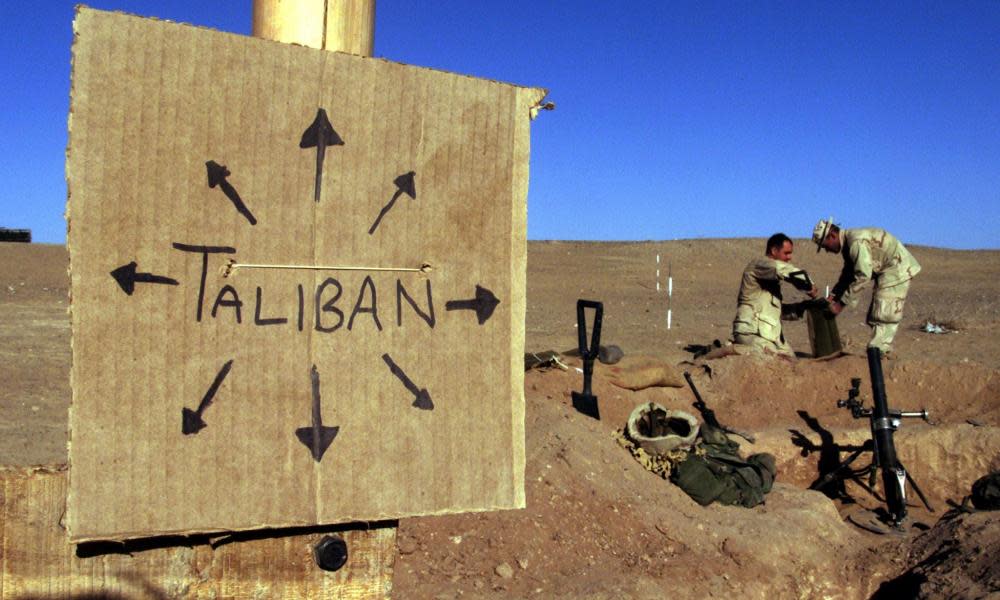Directorate S review – masterly study

America’s long war in Afghanistan continues on the turbulent watch of Donald Trump – maintaining military pressure on the Taliban to try to force them to negotiate. It is now, in the president’s Twitter-friendly words, not about nation-building but fighting terrorists, though on a far smaller scale since Barack Obama ended what George W Bush started in the wake of the 9/11 attacks. Al-Qaida was quickly routed but it was another decade before Osama bin Laden was tracked down and killed in his Pakistani compound.
Steve Coll’s deeply impressive new book picks up the story where his acclaimed Ghost Wars left off, in the aftermath of the US invasion in 2001. It is a complicated tale of counter-insurgency operations, high politics and low cunning. It plays out in one of the poorest countries in the world, a graveyard for empires and a vicious battleground for regional rivalry. And it is truly, as he writes, “a humbling case study in the limits of American power”.
Pakistan was and remains a key actor, especially its ISI intelligence service, whose shadowy Directorate S of the title maintained links with the Taliban, but manipulated them as much as it did the CIA. Its approach was to “keep the Afghan pot boiling, but not so hot that it scorch Pakistan”. ISI had been the CIA’s partner in the jihad against the Soviet occupation – when Bin Laden won his spurs. Later it helped the Americans fight al-Qaida but also covertly backed terrorist attacks in India.
Afghan presidents Hamid Karzai and Ashraf Ghani presided over appalling levels of poverty and corruption. US and Nato plans for development and improved governance clashed with a fatal dependence on brutal warlords.
David Petraeus, who served as CIA director after serving in Iraq and Afghanistan, sometimes confused the two countries
The shadow of Iraq looms large, draining US resources and attention. General Tommy Franks of central command was planning operations against Bin Laden’s hideout at Tora Bora in November 2001 when Donald Rumsfeld, Bush’s defence secretary, ordered him to prepare an invasion of Iraq. Bush paid billions for the Afghan war but would not devote 10% of its cost to secure the peace. Rumsfeld appeared not to care. In 2003 the US national security council met to discuss Afghanistan just twice.
In time Iraq became a recruiting ground for jihadists and helped al-Qaida metastasise into Islamic State – which US air strikes are still targeting in Waziristan and beyond. Suicide bombings became part of the Afghan landscape. Perpetrators were often illiterate or disabled teenagers, some of them drugged: one went to say goodbye to his parents but accidentally detonated his explosive belt and killed them as well as himself.
Coll, a former south Asia correspondent for the Washington Post, Pulitzer prize winner and staff writer on the New Yorker, is a deft guide through a labyrinthine but carefully structured story, and his range of sources is stunning. Footnotes reference hundreds of interviews with US, Afghan and Pakistani officials, as well as documents (some provided by WikiLeaks) and memoirs. Highly sensitive conversations are reported in incredible detail.
Bush and Obama – who seem endearingly human compared with the current incumbent of the Oval office – both struggled to answer essential questions about Afghanistan. So did experienced officials like Richard Holbrooke, the larger-than-life diplomat who tried to arrange talks with the Taliban, and David Petraeus, who did a stint as CIA director after serving in Iraq and Afghanistan and sometimes confused the two countries. Joe Biden, Obama’s vice-president, provided a moment of rare clarity when he told Karzai that (nuclear-armed) Pakistan was “50 times more important to the US than Afghanistan”.
Coll’s Americans, especially his CIA station chiefs, case officers and contracted academic experts, loom larger than the Afghan and Pakistani soldiers, spymasters and politicians who also crowd his pages. But their interactions are a fascinating mixture of suspicion, deference, envy and frustration. PowerPoint presentations in Washington and briefings in Kabul and Islamabad provide the backdrop, but the consequences of decisions are on stark display as well: a Pashtun leader who worked with the Americans was executed by the Taliban, who strung up his corpse as a Predator drone watched overhead. Five US soldiers were charged with killing Afghans for fun, keeping their fingers as mementoes. Holbrooke compared Kandahar to 1920s Chicago, its governor to Al Capone.
One gripping chapter is structured around the diary of a US army lieutenant whose tour of duty in Helmand province is dominated by the raw fear of encountering the improvised explosive devices that take the limbs and lives of his men. The phenomenon of Afghans killing US or other foreign soldiers is illustrated by the story of an idealistic Pashtu-speaking American officer shot by a Taliban agent in a secure compound in Kabul.
Obama’s 2009 decision to boost the US presence by 30,000 troops was accompanied by the eyebrow-raising pledge that after 18 months they would start coming home: that public declaration of intent ushered in an intensifying ground war along with an accelerating CIA drone campaign, as well as ultimately abortive efforts to reach agreement with the Taliban. All these were approved in Washington, but as the author observes, “it would require feats of mental gymnastics to call these lines of action synchronised”.
Coll has again proved that he is a master of journalistic history. He has brilliantly achieved his goal of prioritising “action, vivid characters and original reporting, without sacrificing depth and context”.
• Directorate S by Steve Coll is published by Allen Lane (£25). To order a copy for £21.25 go to guardianbookshop.com or call 0330 333 6846. Free UK p&p over £10, online orders only. Phone orders min p&p of £1.99


